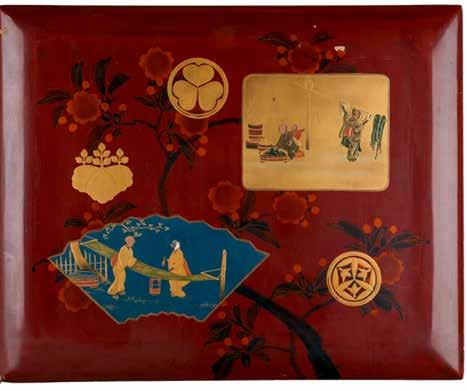Symbols of failure, of success: samurai culture and martial architecture
Mark K. Erdmann
Katsushika Hokusai’s (1760–1849) Nihon bridge at Edo (fig. 1), designed c.1830–34, almost certainly received its stamp of approval from government censors with little or no hesitation. Although the design employs the exotic feature of Western one-point perspective and was destined to be reproduced as a print – that is, the preferred medium of Edo-period (1616–1868) counter-culture – for the ruling samurai elite who sat on the censor board, Hokusai’s vision reflected the world as it should be.1 At the centre of the image sits one of Edo Castle’s turrets, the public face of the ruling military government, known as a shogunate. The turret appears as not only overseeing a bustling scene on Nihon bridge in the foreground but is framed as directly responsible for the city’s vibrancy. Reaching into the heavens and acting as link between this scene of commerce below and the divine peak that is Mount Fuji above,
22
fig. 1: Katsushika Hokusai, Japan, 1760–1849, Nihon Bridge at Edo (Nihonbashi) from the series Thirty-six views of Mount Fuji (Fugaku sanjurokkei), c.1830–34, Edo (Tokyo), woodblock print, ink and colour on paper, 24.8 x 36.6 cm (sight); Gift of Edward Newman 2004
1 Timon Screech, ‘The meaning of Western perspective in Edo popular culture’, Archives of Asian Art, vol. 47, 1994, p. 66.

















